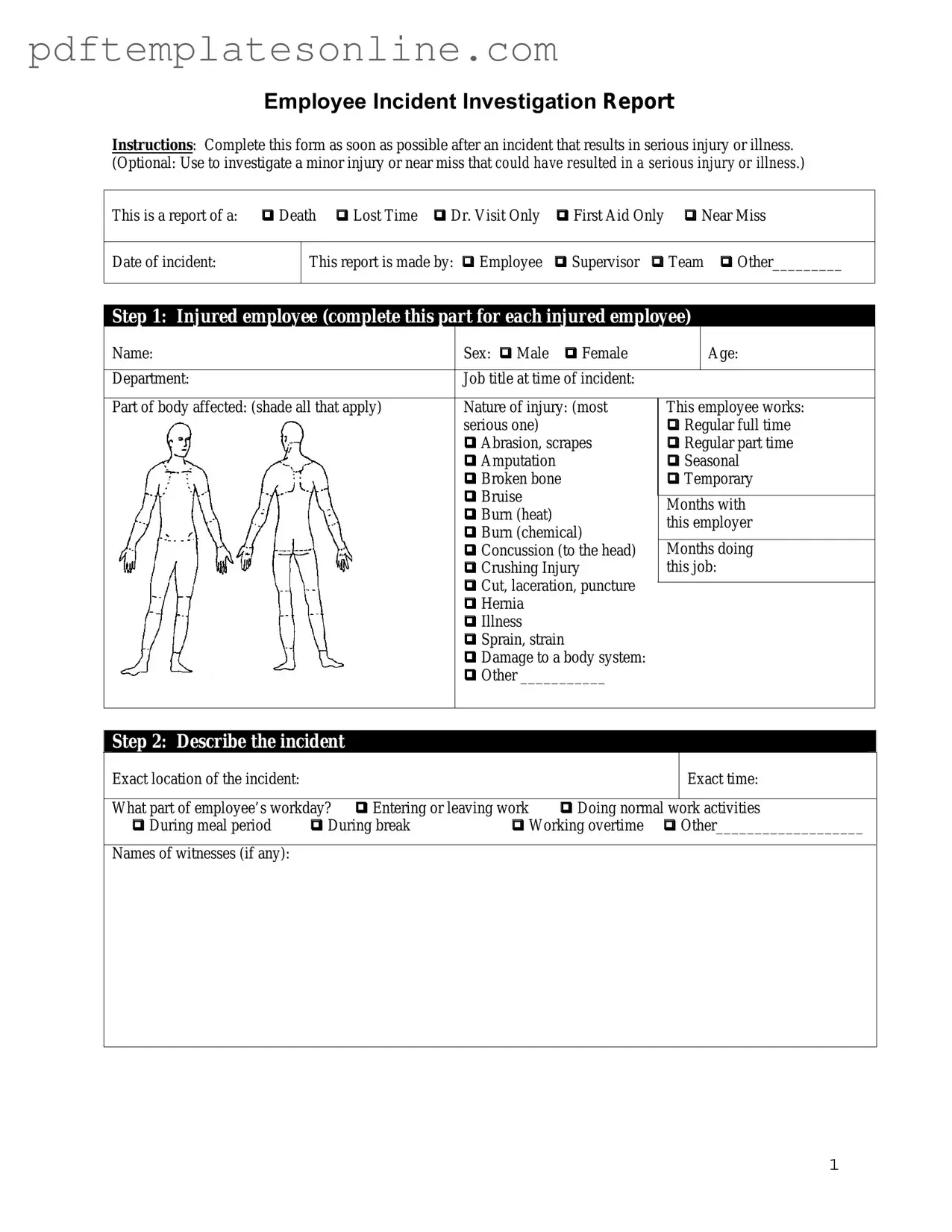When filling out an Employee Accident Report form, many individuals unknowingly make mistakes that can hinder the reporting process and impact the resolution of their claims. One common error is failing to provide a detailed description of the incident. A vague account can lead to misunderstandings and delays in processing the report. It’s essential to include specific details such as the time, location, and nature of the accident to create a clear picture of what occurred.
Another frequent mistake is neglecting to include witness information. If others were present during the incident, their accounts can provide valuable context and support the injured party’s claims. Without witness statements, the report may lack crucial corroboration, making it harder for investigators to determine the circumstances surrounding the accident.
Some individuals also overlook the importance of documenting injuries. It’s not enough to simply state that an injury occurred; the report should detail the nature and extent of the injuries sustained. This information is vital for medical treatment and any potential claims that may arise from the incident.
In addition, people often forget to sign and date the report. A signature is not just a formality; it signifies that the information provided is accurate to the best of the individual’s knowledge. Submitting an unsigned report can result in delays or even a rejection of the claim.
Another common pitfall is failing to report the accident in a timely manner. Many organizations have specific deadlines for reporting incidents, and missing these deadlines can complicate the process. Prompt reporting allows for a quicker investigation and can lead to faster resolution of any claims.
Some individuals may also make the mistake of providing incomplete or inaccurate personal information. This can include incorrect contact details or employee identification numbers. Such inaccuracies can create confusion and may delay communication regarding the incident.
Lastly, individuals sometimes underestimate the significance of following up on their report. After submitting the Employee Accident Report, it’s important to check in with the appropriate personnel to ensure that the report has been received and is being processed. This proactive approach can help ensure that the matter is addressed in a timely manner.
